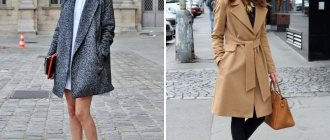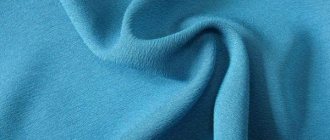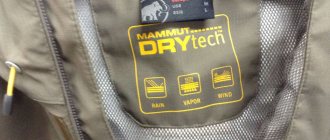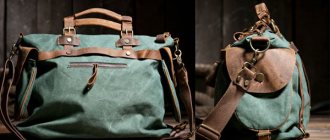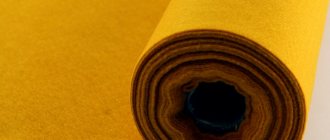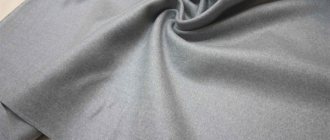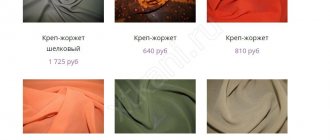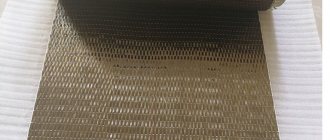Advantages of wool over cashmere
Nevertheless, wool has something to answer for such a wonderful material. It is definitely easier to care for, since pellets do not form on it so quickly. It is also more affordable, because, as described above, its production is much simpler.
Wool is sure to be itchy to one degree or another, but it can last much longer, simply because it is not so delicate. It can be washed in an automatic machine under certain conditions, while you should never do this with cashmere. By the way, for the same capricious reason, wool can often be found in products in its pure form, without synthetic fibers.
Which is better: a cashmere coat or a wool coat?
As you can see, the advantages and disadvantages of the materials considered are almost equal in quantity, which means that both of them have the right to participate in your life. Having studied the features of wearing wool and cashmere products, you now have an idea of which material suits you best. Be sure that in any case you will receive a very warm and very attractive coat, whether it is made from one of these two materials.
Ideally, by trial and error, find out for yourself which winter coat is better: cashmere or wool, because only experience will make this clear for sure!
Advantages of cashmere over wool
A type of coat fabric such as cashmere is characterized by an amazing contradiction: the fabric is thin and quite warm
.
In terms of its heat-saving properties, it is eight times better than wool
, and therefore can withstand more severe low temperatures.
Accordingly, a cashmere product is lighter in weight and is somewhat more comfortable to wear
.
It should also be noted how soft and pleasant cashmere is to the touch.
.
You can even wear it on your naked body and not feel any discomfort. Among the additional advantages of this material, one should highlight its flexibility for coloring
.
A wide palette of colors for cashmere
is a very important point for creators and fashion bearers.
Variety of species
According to its composition, drape is:
- Elite - the highest grade. It is obtained by double weaving fibers from 100% selected woven wool. The fabric has increased wear resistance and retains its original appearance for a long time.
- Pure wool fabric allows the inclusion of no more than 15% impurities. These can be chemically recovered wool fibers. Made from high-grade raw materials using double-sided weaving.
- Fabrics from the cheap category are made from low quality threads in the bottom layer. The underside of them looks looser and more fibrous. It is difficult to find external differences from expensive options, but the density of such drape is less and it is ventilated in bad weather.
- Material containing 30-85% wool is considered to be wool blend. During production, several percent of viscose, polyester and nylon fibers are added to the weaving of the lining layer. Mixed drape is easily distinguished by its looseness and softness.
- A synthetic drape in which a combination of polyester and artificial threads manages to achieve an external resemblance to its wool counterpart. A cheap substitute is used in toys, workwear and souvenirs.
According to the dyeing method, the fabric is classified:
- Threads of the same color make it possible to obtain a plain, plain-dyed fabric.
- The use of two or more tones gives a melange drape, for example, “houndstooth” as in the photo. Intricate and skillful weaving increases the value of the fabric.
- Multi-colored or variegated drape is obtained by weaving with multi-colored threads.
Changing the technology of pile processing produces the following types of material:
- Unlined with a smooth surface.
- Ratin - with a diagonal arrangement of the pile in narrow stripes.
- Fluffy on the front side, due to the addition of goat fluff to the two-layer fabric.
- The fabric is machine pressed and brushed, which makes the weave structure invisible. The result is a fluffy or smooth velor drape with thick and soft pile.
- bottle, when an intricate pattern is formed from the pile.
The thickness of the finished canvas may vary. Accordingly, the drape is produced:
- single-layer with satin or twill weave threads. Belongs to the category of costume fabrics. Its density is limited to 550 g/m².
- one and a half layer 600 g/m². Demi-season coats are made from it.
- Two-layer, up to 700 g/m². It is intended for winter combined warm products.
Types and characteristics of materials
There are different types of wool coat fabric.
Drape
Drape coat
It can be entirely wool or mixed with chemical fibers, for example, polyester and nylon. Retains heat well and is not blown away by the wind.
Tweed
Examples of tweed coats
Wool fabric with a combination of viscose and acrylic. Pleasant to the touch and ideal for everyday wear.
Alpaca
Alpaca coat
A product made from alpaca wool and down, it retains its neat appearance for a long time, is durable, and hypoallergenic.
Gabardine
Gabardine coat
Rigid fabric with the addition of synthetics or stretch with an admixture of elastane. It allows air to pass through and does not absorb odors; it holds its shape for a long time.
Crepe
Crepe coat
In addition to wool, the material contains silk, viscose, and polyester. A crepe coat is warm and dense, does not stretch.
Cashmere
Cashmere coat
High-quality and expensive down (sometimes with a small cotton content). Durable, wear-resistant and shape-resistant, elite material.
Learn more about each coat fabric
Fine coat fabrics
For the production of these materials, both pure wool and mixed raw materials are used. Most often viscose, lavsan or acrylic are added. A characteristic feature of the canvases is the presence of a fleecy covering, which can have different heights and densities and completely or partially hide the threads.
Fabrics are produced by plain or twill weave. Pile is added by felting, followed by fluffing and trimming. In most cases, fine wool fabrics are used to sew autumn or spring coats. The most common representatives of this group of materials are drape and cloth.
Drape
Fine cloth drapes are considered entirely wool if the amount of additives in the yarn does not exceed 15%, and half-woolen when synthetic fibers account for more than 50% of the volume. This heavy, dense fabric is produced on machines in which the threads run in several rows. Thus, the drape can have one and a half or two layers of weave.
If the material is produced using threads that differ in color, the result is a melange fabric. Depending on the weave, fabrics with a variety of patterns are produced. They are used to make high-quality men's coats that have a respectable price.
Drape fabrics include the following:
- Velours. Pure wool material made from merino sheep wool. It is distinguished by thick pile, which makes the fabric soft and pleasant to the touch. With prolonged use, it may pill and dry out.
- Ratin. A characteristic feature is the pile, laid in the form of diagonal stripes. It has high wear resistance and gives a pleasant tactile sensation.
- Flacome. To produce this fabric, wool from Merino and Tsigean sheep is used. It also has a ribbed structure, which differs from ratite in the arrangement of the pattern.
All these materials are united by resistance to external influences: due to the thickness and multi-layering, the drape is not blown by the wind and warms in cold weather. In addition, the fabric does not fade from moisture and does not fade in the sun, which allows the products to last for many years.
Cloth
This woolen or half-woolen fabric is easily recognized by its dense, as if whipped pile, in which there are no gaps. To make it, the fluffiest yarn is selected; Merino wool, to which a little sheep or camel fiber is added, is best suited for cloth. This fabric is characterized by the following properties:
- high strength;
- wear resistance and durability;
- waterproof;
- natural and hypoallergenic.
The disadvantage of cloth fabrics is their significant creasing. Get rid of folds and creases using an iron. However, it should be remembered that felt can easily be burned, so the regulator must be set to the “wool” position.
Interesting to know! One of the varieties of material is overcoat cloth - a fabric with amazing properties . It protects against burns and frostbite, wind and rain. It is made using strictly established technology that does not allow even the slightest deviation. The scope of application of this cloth is extensive - military uniforms, clothing for firefighters, metallurgists, chemical industry workers, etc.
What are they sewing?
Drape is a fabric that is widely used for making suits in classic and modern styles, sophisticated and warm coats, original hats, caps and scarves. Blended fabrics are used for windproof equipment and uniforms.
The material is universal, easy to use, easy to cut and sew. The slices do not crumble at all.
Accessories, decor and toys are made from drape. It is in demand in interior design and furniture production for covering sofas and armchairs.
What is the difference, cashmere and drape
With the development of the textile industry, competitors appeared for woolen fabric. One of them is cashmere. To understand that information about the main differences will help better.
- You need to pay attention to the density. Cashmere is softer, lighter and more elastic, while the drape is heavy and dense. Loose coats and capes are sewn from the first.
- Cashmere is warmer only in its classic form, when it consists of 100% goat down. Compromise options made from a mixture of wool and synthetics, which are often found on store shelves, do not provide reliable protection from the cold and wear out quickly.
